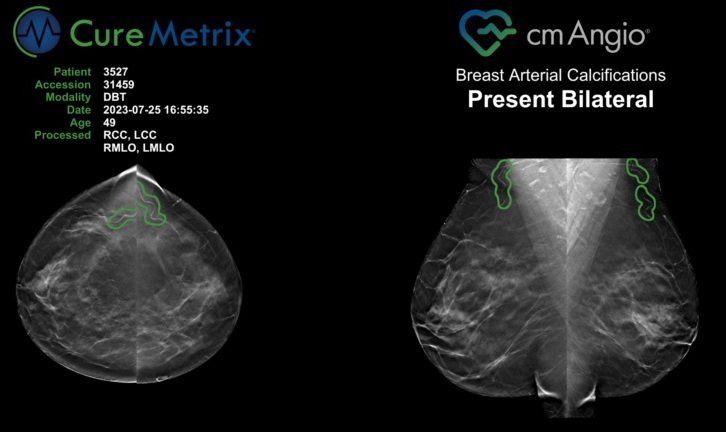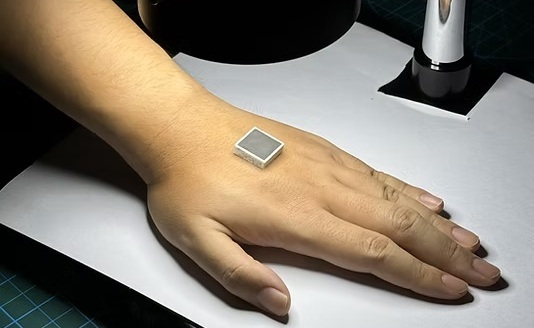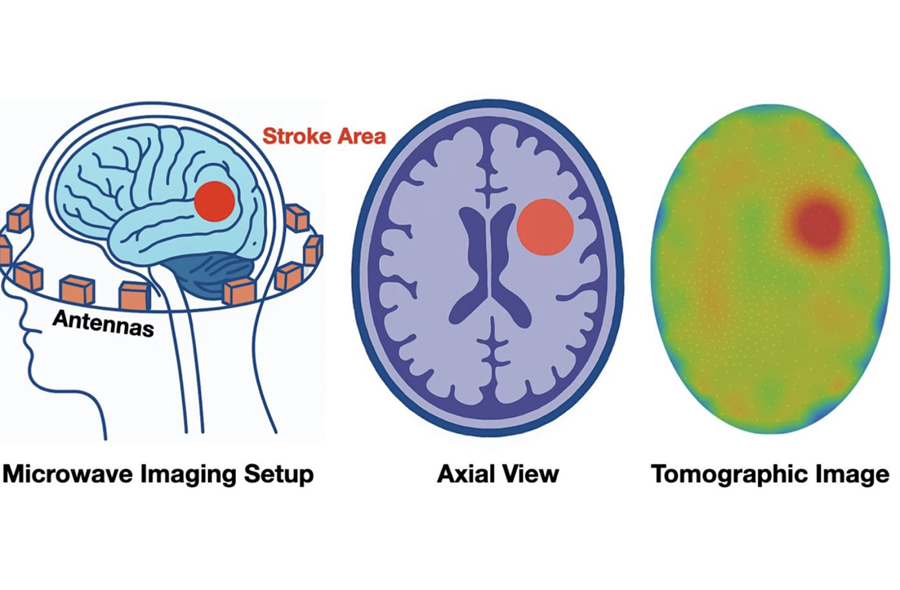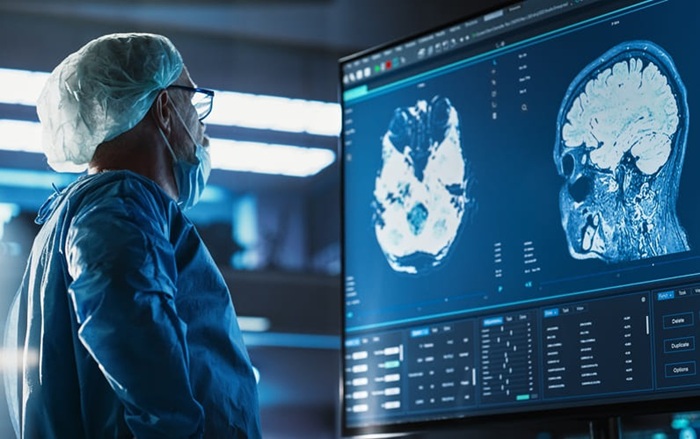Global Magnetic Resonance Imaging (MRI) Market to be driven by Advancements in Medical Diagnostics
|
By MedImaging International staff writers Posted on 12 Jun 2020 |

Image: Magnetic Resonance Imaging Market (Photo courtesy of Transparency Market Research)
The global magnetic resonance imaging (MRI) market was valued at USD 5.90 billion in 2017 and is projected to register a CAGR of 5.2% from 2018 to 2026, driven by increased demand for MRI equipment across the world due to a substantial rise in incidence of disorders related to spine, neurology, orthopedic, cardiovascular, head and neck, and abdominal and prostate.
These are the latest findings of Transparency Market Research (Baner, Pune, India), a market research and consulting company.
The effectiveness of MRI scans in diagnosing disorders in the brain, spinal cord, and other critical regions is driving sales of the global MRI market. The need to treat and manage spinal disorders has given a thrust to the growth of the global MRI market. Medical practitioners give immense importance to MRI scans while treating and managing cases of spinal disorders. Furthermore, the rising incidence of neurological disorders has also provided an impetus to the growth of the global MRI market. The relevance of MRI in the domain of orthopaedic testing has also boosted its market growth. Besides, the health of people suffering from prostate diseases is also monitored with the help of MRI scans. Several new treatment lines that involve the use of MRI have come to the fore in recent times. The domain of cardiovascular surgery has also emerged as a prominent user of MRI technologies. Head and neck injuries are diagnosed using specialised MRI machines.
Additionally, there is increasing pressure on governments to explore avenues for improving health care facilities for the geriatric population while reducing the financial burden. An upsurge in the geriatric population is likely to boost the demand for health care products and services as this segment of population is more prone to diseases, such as, orthopedic (osteoporosis), cardiovascular diseases, etc. The identification of these disorders is crucial for decision making and ensuring proper treatment. These diseases can be accurately diagnosed with the use of imaging equipment, such as MRI. Hence, a rise in the aging population is expected to drive the growth of the global MRI market in the near future.
The development of health care infrastructure in the emerging economies, coupled with growing awareness about the available treatment options for spine, neurology, orthopedic, cardiovascular, head and neck, and abdominal and prostate health issues has led to rapid adoption of the latest MRI equipment in regions, such as, Asia Pacific, the Middle East, Latin America, and emerging African countries. Increased efforts made by government and health care organizations in such countries for the efficient treatment of patients have boosted the adoption of MRI equipment. Geographically, North America dominated the global MRI market in 2017. Going forward, technological advancements, increase in prevalence of chronic diseases, rapid adoption of MRI equipment by service providers, and rise in demand for early diagnose of diseases are likely to boost the growth of the North American MRI market during the forecast period. The MRI market in Asia Pacific is expected to witness a significant growth during the forecast period, driven by untapped opportunities, improving health care infrastructure, favorable government initiatives, and increase in the geriatric population.
However, the high price of MRI scanners is a major restraining factor for the growth of the MRI market in the emerging countries. In these regions, complementary systems, such as ultrasound are installed as an alternative to MRI equipment. Moreover, despite the procurement of expensive high resolution closed system MRI equipment, they cannot be used fully as a large number of patients suffer from claustrophobia and have reservations against using such equipment. These factors have resulted in limited adoption of premium devices, such as, very high field MRI (4.0t - 5.0t) and ultra-high field MRI (6.0t and above), thereby leading to average growth of the MRI market. Nevertheless, technological advancements have prompted the development of high resolution open MRI equipment. These devices are likely to be widely accepted in the near future due to better patient compliance and improved skills of caregivers.
Related Links:
Transparency Market Research
These are the latest findings of Transparency Market Research (Baner, Pune, India), a market research and consulting company.
The effectiveness of MRI scans in diagnosing disorders in the brain, spinal cord, and other critical regions is driving sales of the global MRI market. The need to treat and manage spinal disorders has given a thrust to the growth of the global MRI market. Medical practitioners give immense importance to MRI scans while treating and managing cases of spinal disorders. Furthermore, the rising incidence of neurological disorders has also provided an impetus to the growth of the global MRI market. The relevance of MRI in the domain of orthopaedic testing has also boosted its market growth. Besides, the health of people suffering from prostate diseases is also monitored with the help of MRI scans. Several new treatment lines that involve the use of MRI have come to the fore in recent times. The domain of cardiovascular surgery has also emerged as a prominent user of MRI technologies. Head and neck injuries are diagnosed using specialised MRI machines.
Additionally, there is increasing pressure on governments to explore avenues for improving health care facilities for the geriatric population while reducing the financial burden. An upsurge in the geriatric population is likely to boost the demand for health care products and services as this segment of population is more prone to diseases, such as, orthopedic (osteoporosis), cardiovascular diseases, etc. The identification of these disorders is crucial for decision making and ensuring proper treatment. These diseases can be accurately diagnosed with the use of imaging equipment, such as MRI. Hence, a rise in the aging population is expected to drive the growth of the global MRI market in the near future.
The development of health care infrastructure in the emerging economies, coupled with growing awareness about the available treatment options for spine, neurology, orthopedic, cardiovascular, head and neck, and abdominal and prostate health issues has led to rapid adoption of the latest MRI equipment in regions, such as, Asia Pacific, the Middle East, Latin America, and emerging African countries. Increased efforts made by government and health care organizations in such countries for the efficient treatment of patients have boosted the adoption of MRI equipment. Geographically, North America dominated the global MRI market in 2017. Going forward, technological advancements, increase in prevalence of chronic diseases, rapid adoption of MRI equipment by service providers, and rise in demand for early diagnose of diseases are likely to boost the growth of the North American MRI market during the forecast period. The MRI market in Asia Pacific is expected to witness a significant growth during the forecast period, driven by untapped opportunities, improving health care infrastructure, favorable government initiatives, and increase in the geriatric population.
However, the high price of MRI scanners is a major restraining factor for the growth of the MRI market in the emerging countries. In these regions, complementary systems, such as ultrasound are installed as an alternative to MRI equipment. Moreover, despite the procurement of expensive high resolution closed system MRI equipment, they cannot be used fully as a large number of patients suffer from claustrophobia and have reservations against using such equipment. These factors have resulted in limited adoption of premium devices, such as, very high field MRI (4.0t - 5.0t) and ultra-high field MRI (6.0t and above), thereby leading to average growth of the MRI market. Nevertheless, technological advancements have prompted the development of high resolution open MRI equipment. These devices are likely to be widely accepted in the near future due to better patient compliance and improved skills of caregivers.
Related Links:
Transparency Market Research
Latest Industry News News
- GE HealthCare and NVIDIA Collaboration to Reimagine Diagnostic Imaging
- Patient-Specific 3D-Printed Phantoms Transform CT Imaging
- Siemens and Sectra Collaborate on Enhancing Radiology Workflows
- Bracco Diagnostics and ColoWatch Partner to Expand Availability CRC Screening Tests Using Virtual Colonoscopy
- Mindray Partners with TeleRay to Streamline Ultrasound Delivery
- Philips and Medtronic Partner on Stroke Care
- Siemens and Medtronic Enter into Global Partnership for Advancing Spine Care Imaging Technologies
- RSNA 2024 Technical Exhibits to Showcase Latest Advances in Radiology
- Bracco Collaborates with Arrayus on Microbubble-Assisted Focused Ultrasound Therapy for Pancreatic Cancer
- Innovative Collaboration to Enhance Ischemic Stroke Detection and Elevate Standards in Diagnostic Imaging
- RSNA 2024 Registration Opens
- Microsoft collaborates with Leading Academic Medical Systems to Advance AI in Medical Imaging
- GE HealthCare Acquires Intelligent Ultrasound Group’s Clinical Artificial Intelligence Business
- Bayer and Rad AI Collaborate on Expanding Use of Cutting Edge AI Radiology Operational Solutions
- Polish Med-Tech Company BrainScan to Expand Extensively into Foreign Markets
- Hologic Acquires UK-Based Breast Surgical Guidance Company Endomagnetics Ltd.
Channels
Radiography
view channel
Routine Mammograms Could Predict Future Cardiovascular Disease in Women
Mammograms are widely used to screen for breast cancer, but they may also contain overlooked clues about cardiovascular health. Calcium deposits in the arteries of the breast signal stiffening blood vessels,... Read more
AI Detects Early Signs of Aging from Chest X-Rays
Chronological age does not always reflect how fast the body is truly aging, and current biological age tests often rely on DNA-based markers that may miss early organ-level decline. Detecting subtle, age-related... Read moreMRI
view channel
Novel Imaging Approach to Improve Treatment for Spinal Cord Injuries
Vascular dysfunction in the spinal cord contributes to multiple neurological conditions, including traumatic injuries and degenerative cervical myelopathy, where reduced blood flow can lead to progressive... Read more
AI-Assisted Model Enhances MRI Heart Scans
A cardiac MRI can reveal critical information about the heart’s function and any abnormalities, but traditional scans take 30 to 90 minutes and often suffer from poor image quality due to patient movement.... Read more
AI Model Outperforms Doctors at Identifying Patients Most At-Risk of Cardiac Arrest
Hypertrophic cardiomyopathy is one of the most common inherited heart conditions and a leading cause of sudden cardiac death in young individuals and athletes. While many patients live normal lives, some... Read moreUltrasound
view channel
Wearable Ultrasound Imaging System to Enable Real-Time Disease Monitoring
Chronic conditions such as hypertension and heart failure require close monitoring, yet today’s ultrasound imaging is largely confined to hospitals and short, episodic scans. This reactive model limits... Read more
Ultrasound Technique Visualizes Deep Blood Vessels in 3D Without Contrast Agents
Producing clear 3D images of deep blood vessels has long been difficult without relying on contrast agents, CT scans, or MRI. Standard ultrasound typically provides only 2D cross-sections, limiting clinicians’... Read moreNuclear Medicine
view channel
PET Imaging of Inflammation Predicts Recovery and Guides Therapy After Heart Attack
Acute myocardial infarction can trigger lasting heart damage, yet clinicians still lack reliable tools to identify which patients will regain function and which may develop heart failure.... Read more
Radiotheranostic Approach Detects, Kills and Reprograms Aggressive Cancers
Aggressive cancers such as osteosarcoma and glioblastoma often resist standard therapies, thrive in hostile tumor environments, and recur despite surgery, radiation, or chemotherapy. These tumors also... Read more
New Imaging Solution Improves Survival for Patients with Recurring Prostate Cancer
Detecting recurrent prostate cancer remains one of the most difficult challenges in oncology, as standard imaging methods such as bone scans and CT scans often fail to accurately locate small or early-stage tumors.... Read moreGeneral/Advanced Imaging
view channel
AI-Based Tool Accelerates Detection of Kidney Cancer
Diagnosing kidney cancer depends on computed tomography scans, often using contrast agents to reveal abnormalities in kidney structure. Tumors are not always searched for deliberately, as many scans are... Read more
New Algorithm Dramatically Speeds Up Stroke Detection Scans
When patients arrive at emergency rooms with stroke symptoms, clinicians must rapidly determine whether the cause is a blood clot or a brain bleed, as treatment decisions depend on this distinction.... Read moreImaging IT
view channel
New Google Cloud Medical Imaging Suite Makes Imaging Healthcare Data More Accessible
Medical imaging is a critical tool used to diagnose patients, and there are billions of medical images scanned globally each year. Imaging data accounts for about 90% of all healthcare data1 and, until... Read more





















